Space
Sign up for our newsletter
We summarize the week's scientific breakthroughs every Thursday.
-
 Astronomy
AstronomyReturn of superstar supernova raises doubt about its identity
The brightest supernova on record is back for round two, and might not be a supernova after all.
-
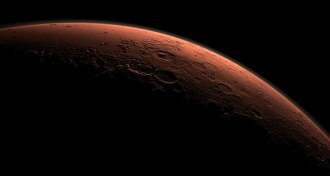 Planetary Science
Planetary ScienceSpace experts say sending humans to Mars worth the risk
At a meeting in Washington, NASA and aerospace reps discuss the hopes and hurdles of landing a crew on Mars by the 2030s.
-
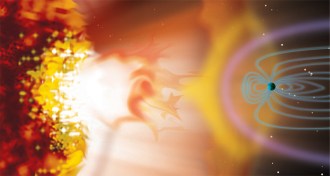 Astronomy
AstronomyYoung sun’s super solar flares helped set early Earth up for life
Super solar flares may have provided early Earth with planet-warming and life-building molecules.
-
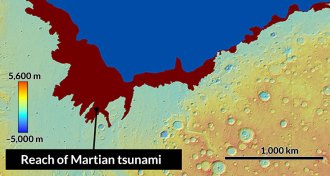 Oceans
OceansAncient tsunamis reshaped Mars’ landscape
Ancient tsunamis generated by meteorite impacts may have reshaped ocean coastlines on Mars.
-
 Health & Medicine
Health & MedicineZika, psychobiotics and more in reader feedback
Readers respond to the April 2, 2016, issue of Science News with thoughts on Zika virus, planetary science, microbes in mental health and more.
-
 Astronomy
AstronomyFast-moving star duo is heading out of the Milky Way
A pair of hyperfast stars hurtling through a remote region of the Milky Way might have been orphaned after a long-ago galactic collision, a new study suggests.
-
 Astronomy
AstronomyStephen Hawking finds the inner genius in ordinary people
Ordinary people wrestle with big questions in science and philosophy in Genius, a new television series hosted by Stephen Hawking.
-
 Astronomy
AstronomyEarth has nothing on this exoplanet’s lightning storms
Lightning storms far more intense than any on Earth might explain radio waves that once came from a planet 124 light-years away.
-
 Astronomy
AstronomyKepler telescope doubles its count of known exoplanets
NASA’s Kepler space telescope adds 1,284 planets to the roster of worlds known to orbit other stars in our galaxy.
-
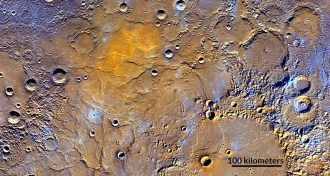 Planetary Science
Planetary ScienceMercury’s stunning landscape mapped
First complete topographic map of Mercury reveals plains, craters and both the highest and lowest points on the planet.
-
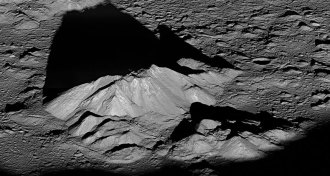 Planetary Science
Planetary ScienceLong-running lunar mission reveals moon’s surprises
Seven years into its mission, the Lunar Reconnaissance Orbiter is still going strong and finding surprises on the moon.
-
 Astronomy
AstronomyMercury is about to make a rare journey across the face of the sun
On May 9, Mercury will make a rare appearance as a small dot passing across the face of the sun.